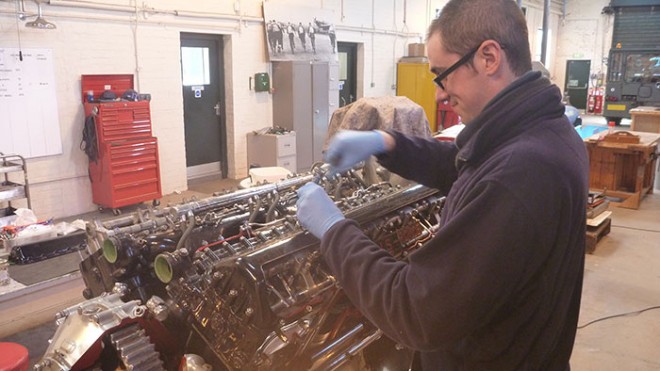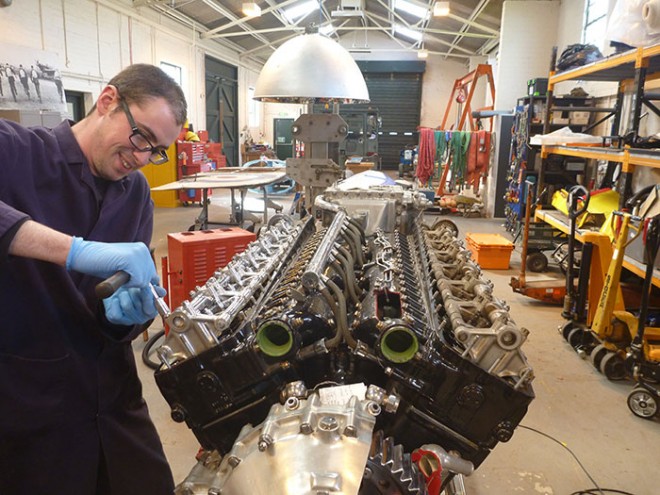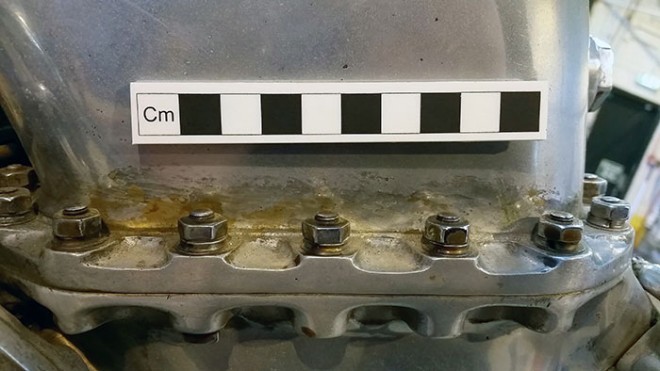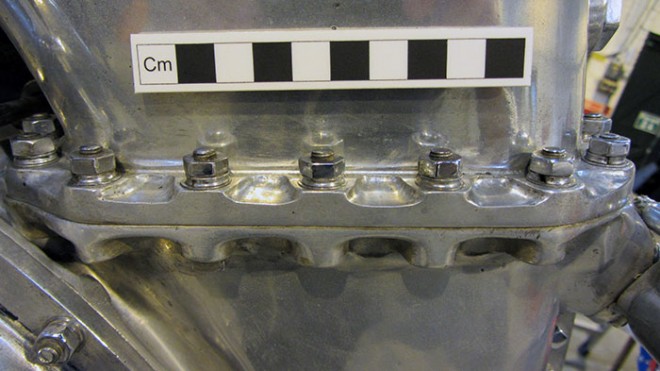As the restoration of two hangars at the National Museum of Flight continues, conservators have been hard at work preparing objects that will go into the new exhibition spaces within them. As Assistant Conservator of Engineering I was thrilled when I found out I was to be working on what is undoubtedly the most iconic aero engine of all time: the Rolls-Royce Merlin.
The Merlin is a 27 litre V-12 liquid cooled piston engine. Powering numerous RAF aircraft during the Second World War, the Merlin was most famously fitted to the Supermarine Spitfire, Hawker Hurricane, Avro Lancaster and the de Havilland Mosquito. The variant going on display at the National Museum of Flight is a 1942 Merlin 73 with a two-stage supercharger and was formerly fitted to a Mosquito. After service the engine was skilfully sectioned allowing for an excellent view of its internal workings.
The Merlin engine had previously been on display in an uncontrolled environment and subject, in the past, to non-conservation cleaning practices. As a result, layers of oil and grease had built up on internal components, becoming ingrained with dust. Polish residue had built up in corners and between components, and chromed ferrous metals and aluminium alloys were beginning to show signs of corrosion. As someone who enjoys tinkering with mechanical objects I couldn’t wait to get started disassembling the Merlin engine to give it a thorough cleaning. The area suffering the most from dirt and corrosion were the camshafts and valve-train, so these were removed to allow better access.

With the rocker covers and camshafts removed I was able to clean away the oil and dirt using solvents and mechanically remove corrosion using wooden scrapers. Any flaking paint caused by corrosion was consolidated with conservation-grade adhesive.

With the camshafts complete, my colleague Assistant Conservator Laurie Price and I set out to remove the years of polish residue left from cleaning. Not only does it look bad but leaving excess polish in all those hard-to-reach areas can actually promote corrosion of metals. Polish residue was painstakingly removed from every nook and cranny using a combination of solvents and mechanical methods.


Once all the oil, dirt and corrosion were removed, the metal components had a coating of microcrystalline wax applied for protection and to keep the engine looking its best. The Merlin will be going on display in one of the newly restored and environmentally controlled hangars in spring 2016. You can read more about the National Museum of Flight redevelopment project here.
Header image © Neil Hanna.
